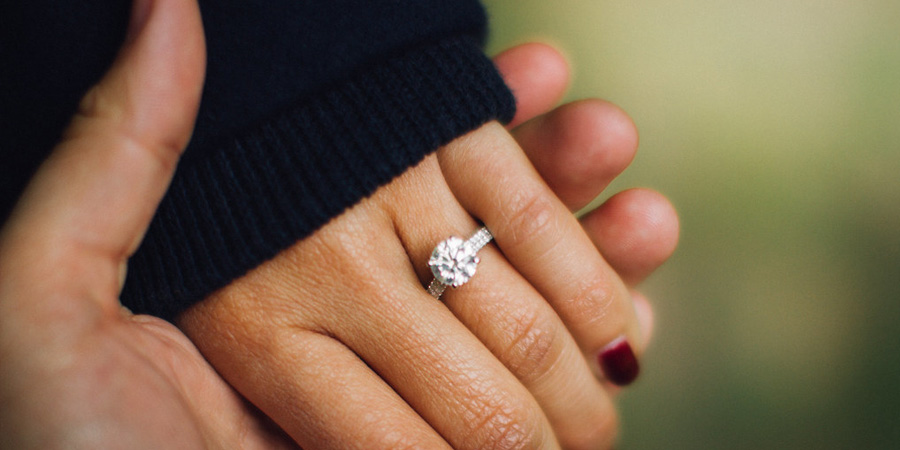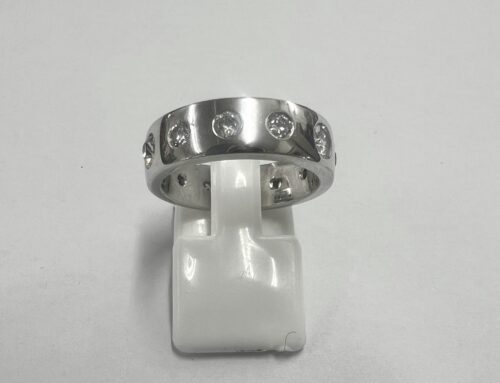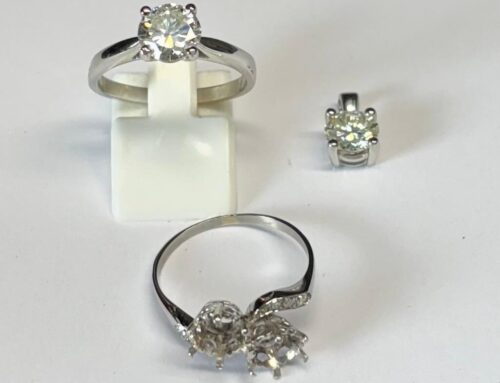Ace Jewellery reports on this lesser-known precious metal.
If you’re currently shopping for your engagement ring – congratulations!
With so many beautiful ring creations out there, you must be overwhelmed by all the choice. Then there’s which gemstone to choose, then the design and then you’ve got to think about the precious metal.
In our experience it is the choice of precious metal that we’re finding impacts most on the price of a ring, after the choice of gemstone.
Platinum is a prestige choice and is often chosen for its sophisticated and luxurious appeal and popularity amongst the rich and famous, so accordingly it will have the price tag to match. However, given the economic climate, did you realise that there’s an alternative metal called palladium that is an inexpensive alternative to white gold or platinum? Let’s take a look at what this could mean for you.
Most of the engagement and wedding rings offered by Jewellers will be made from 18ct white gold or platinum. Both of these metals have their pluses and minuses. For example, the rise in the overall cost of gold sets 18ct white gold at a disadvantage. Also, although it has the benefit of holding it’s shine better than platinum, it will still need to be rhodium plated once every 6-9 months if you want it to retain it’s white appearance.
Platinum on the other hand, has held its price well, and has in fact been dropping, but it is still an expensive metal to work with. Also, platinum doesn’t have the ability to hold its shine that 18ct white has, and in fact dulls fairly quickly. Having said that, some people prefer this look, which is unique to platinum, and actual prefer not to have their rings polished. So if you like your rings shiny and luxurious, but are looking to reduce the overall cost of your ring, then palladium could be just what you’re looking for.
Palladium is 95% pure and is made up of ruthenium and iridium, which are also platinum group metals. As a platinum group metal palladium rings can boast several definite advantages over platinum and white gold.
For example:
- They are naturally white in colour making palladium rings an excellent choice for engagement rings as they bring out the beauty of diamonds and other precious stones.
- The natural colour of palladium rings also means that they do not need rhodium plating, as they do not fade and lose their lustre over time.
- Palladium rings are less dense than their more expensive platinum counterparts, which can make them more comfortable to wear. Yet, despite their lightness, palladium rings, like platinum, are strong enough to bear large gemstones.
- Just like platinum, palladium rings are 95% pure, and this is a distinct benefit as far as quality goes. This also means that palladium is considered hypo-allergenic, making it the perfect choice for you if you have allergies to other metals.
Another key feature of palladium is its tarnish resistance and resistance to chemical erosion, a further advantage over 18ct white gold. You can buy your engagement and your wedding ring in palladium. This removes the need for your trip to your Jeweller to have it rhodium plated, meaning even more cost savings. Even the motor industry has for some time used palladium instead of platinum in catalytic converters, as it performs the same as platinum, but cost less.
We hope this blog has given you some food for thought when thinking about your choice of engagement ring. If you want a durable and affordable, yet still stunning looking ring, then palladium could be your perfect precious metal of choice.
Choosing your engagement ring can be an exciting yet scary job, and we are proud of our reassuring knowledge in this field. So we welcome your questions and would love to help you with that most important of decisions. Call into our showroom in Leeds city centre at 1 Lands Lane, for any advice or assistance, or you can contact us.
Or are you already wearing a palladium engagement or wedding ring, or have you recently made the decision to buy one? Please leave a comment below; we would love to know what you think.





Hello, I log on to your new stuff regularly. Your story-telling style is awesome, keep it up!
Hi, and thank you for your feedback; it’s much appreciated. Glad you like reading our blog, and if there’s anything you would like us to feature, please let us know.
Ace Jewellery
Good article. I’m experiencing many of these issues as well..
Hi John
Thank you for your feedback, greatly appreciated especially from a fellow Jeweller and blogger! This industry certainly keeps us on our toes, doesn’t it, but we still love it! Ace
Remarkable issues here. I’m very satisfied to look your post. Thanks so much and I’m looking ahead to contact you.
Will you kindly drop me a mail?
Hi Chris
Thank you for commenting and we’re glad you enjoyed reading the post. Will drop you an email today. Ace
Wow that was odd. I just wrote an extremely long comment but after I clicked submit my comment didn’t appear. Grrrr… well I’m not writing all that over again.
Anyway, just wanted to say wonderful blog!
Hi Chris
Sorry your comment didn’t appear; that’s technology for you! Glad you enjoyed the post and thanks for taking the time to comment. Love your unique titanium designs on your website! Ace
Hi my friend! I wish to say that this article is awesome, nice written and include approximately all vital infos.
I’d like to see more posts like this .
Hi Daniel
Thank you for your feedback, and glad you enjoyed reading this post. You’ve have some stunning photography on your blog too, and glad to see you love engagement ideas like us! Ace
Very awesome blog !! I codulnt have wrote this any better than you if I tried super hard hehe!! I like your style too!! it’s very unique & refreshing…
Hi Sean
Thanks for taking the time to comment and glad you enjoyed the post. Ace
Hi Edward, that is a stunning ring. I`m looking forward to seeing it next time I`m in Leeds.
Hi Mick
Thanks for comment; it is one of the most beautiful in our collections. Look forward to catching up with you next time you’re in Leeds too.
Ace
Palladium is a very popular metal, especially for engagement rings, and you can see why. I think it has an amazing colour, better than platinum in my opinion.
Greetings! Very useful advice within this post! It’s the little changes that can make the biggest changes. Thanks for sharing!
Hi Dalene
Thanks for your comment, and we agree little changes add up to a lot!
Ace